This Secret Facility Is Helping China’s Navy Become A Submarine Superpower

A Chinese Shang-class nuclear submarine patrolling in the South China Sea
New Delhi: China celebrated the 70th anniversary of the founding of the People’s Liberation Army Navy (PLAN) on 23 April. On the occasion, it organised an international fleet review at Qingdao, which was also attended by the Indian Navy’s lead ship INS Kolkata and the tanker INS Shakti.
As The Economist wrote about the event, the PLAN has come a long way from its days as a brown-water navy (riverine warfare) to a green-water navy (which can operate in its own region), and is now on its way to fulfilling its goal of becoming a blue-water navy, which can operate anywhere in the world.
In the last two decades, the PLAN has modernised rapidly. Today’s PLAN is a modern force with at least one foreign base in Djibouti, and is well on its way to becoming a submarine superpower. ThePrint takes a closer look at China’s naval submarine training infrastructure through commercial satellite imagery.
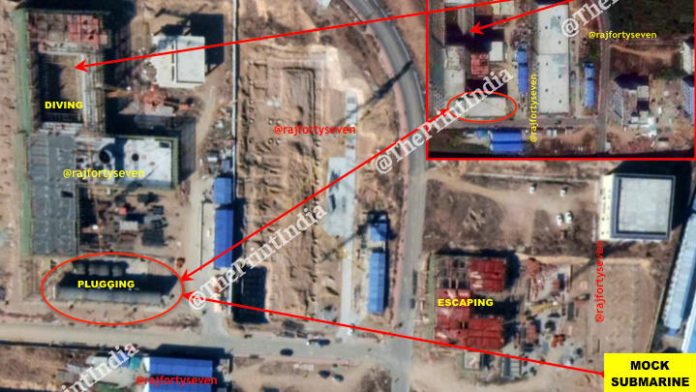
Satellite image of Underwater Battlefield Environment School
Expanding Submarine Force
The submarine environment is an immense challenge for sailors, both physically and mentally. It demands advanced and specialised training to overcome the claustrophobic confines of submarines, especially nuclear submarines, which remain under water for months together without surfacing.
The large submarine production facility at Huludao is capable of producing six to eight submarines every year.
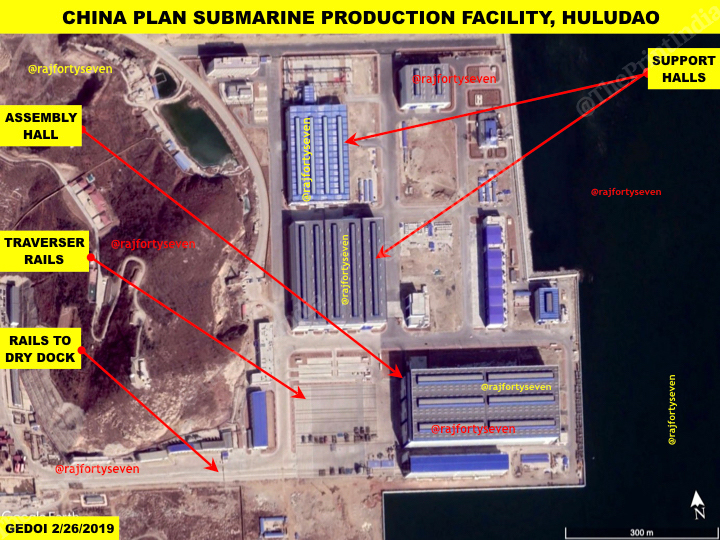
The new subs expected to be produced at Huludao with advanced technology and high efficiency nuclear and conventional technology would require well-trained manpower. The huge need is met by training sailors for specialised sub-surface warfare at the PLAN’s Submarine Academy (NSA).
The Academy In Qingdao
The NSA, which China claims is the only submarine academy in Asia, was established in 1953 at Qingdao by expanding the Lvshun Submarine School.
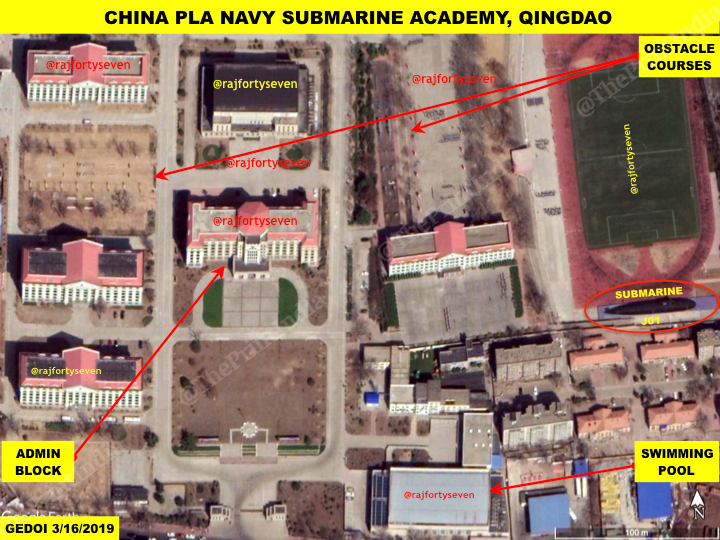
China’s sudden strategic policy shift from coastal defence to sea denial greatly increased the requirement of highly trained submariners to man the hardware.
The NSA decided to expand the academy to a new location with the most modern buildings, equipment and facilities.
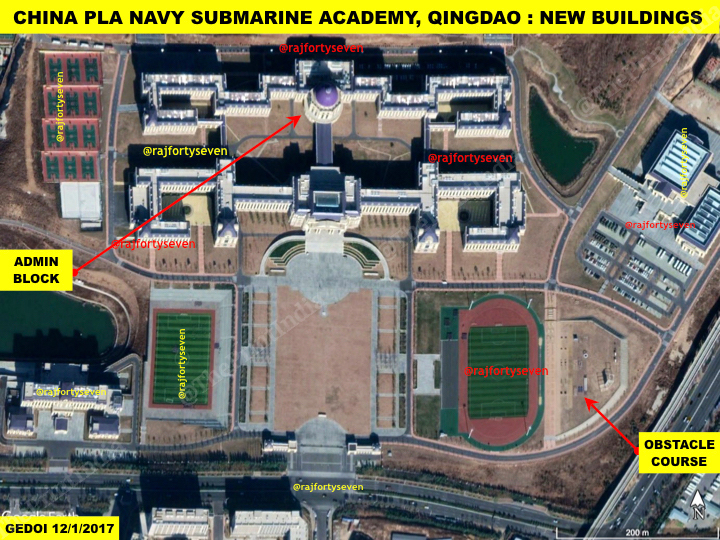
A large number of sports fields and tracks permit the sailors to relieve stress and build team spirit.
Training syllabus
The NSA’s training syllabus has been restructured and reorganised into seven branches of learning in an endeavour to produce a higher quality of submariners:
The training includes intelligence gathering, target identification and launch of appropriate weapons systems.
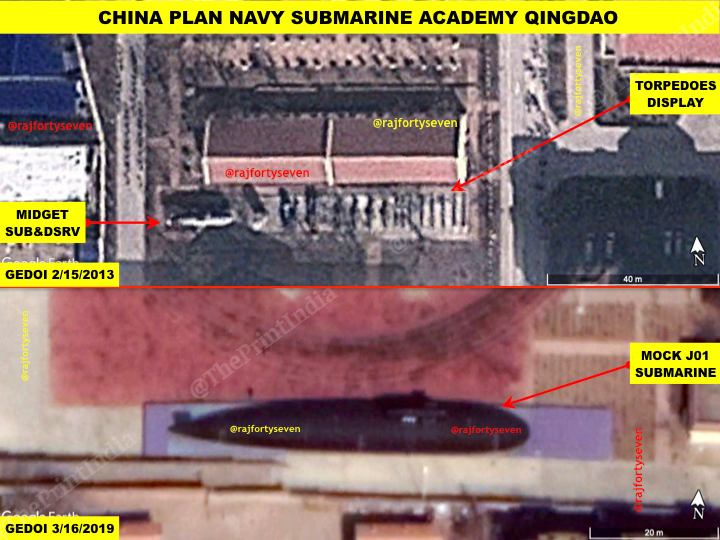
The laying and clearing of mines and defence against ASW aircraft and ships are subjects that are delved into deeply.
Underwater Battlefield Environment School
The advanced training of submariners is to be carried out at the Underwater Battlefield Environment School complex presently under construction.
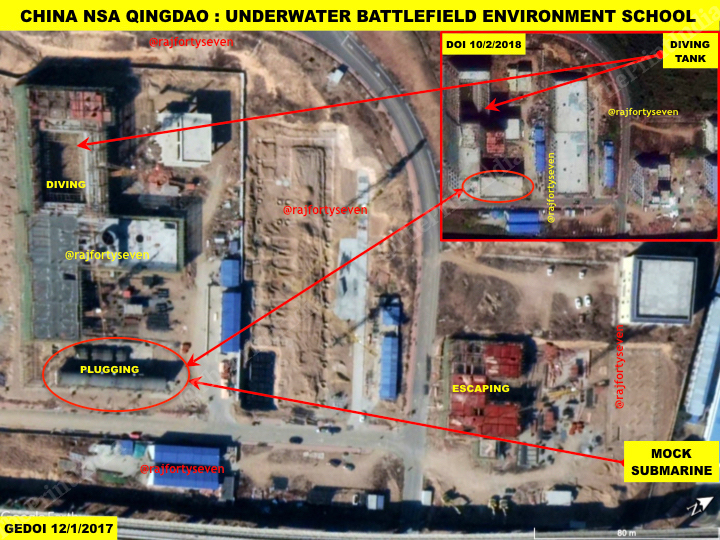
Satellite images indicate that mock submarines are built with simulators and controls for the training of cadets.
Diving tanks and escape from damaged ship equipment like torpedo tubes are later covered with external building-like structures to keep all training equipment under cover from the prying eyes of satellites.
To provide realistic training, many pieces of equipment and facilities are fused together to simulate real combat environments and situations.
Various complex situations — like escape from damaged submarines, plugging a submarine damaged by a torpedo hit, preparing to surface, delivery of special operations forces etc. — are also simulated.


